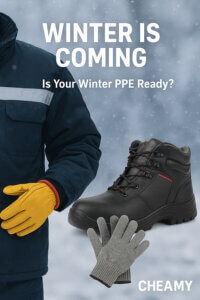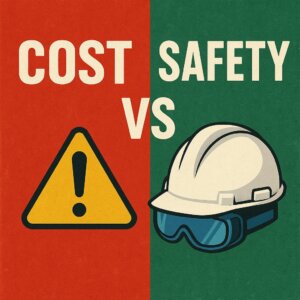The EN 361 standard, mandatory under EU PPE Regulation 2016/425, defines rigorous design, testing, and certification criteria for full-body harnesses in fall arrest systems, ensuring forces ≤6 kN during falls through dynamic load tests (100 kg mass, 4m drop), static strength validation (15 kN for 3 minutes), and corrosion resistance checks (48-hour salt spray). Critical for construction, energy, and industrial sectors, EN 361-certified harnesses feature load-rated D-rings (back/chest), tear-resistant webbing, and CE markings with notified body codes (e.g., 0123), while common errors include misusing side D-rings for fall arrest or neglecting biannual inspections. For global alignment, pair with ANSI Z359.11 (US) or ISO 10333-1 harnesses, prioritizing CE+EN 361 compliance for EU projects.
What Is EN 361?
EN 361:2002 is a European safety standard under the Personal Protective Equipment (PPE) Regulation (EU 2016/425). It specifically applies to full–body harnesses designed to arrest falls from heights exceeding 5 meters. Key objectives include:
- Force Distribution: Ensuring the harness safely disperses fall impact forces across the body.
- Dynamic Performance: Testing resilience under real–world fall scenarios.
- Ergonomic Design: Balancing safety with comfort for prolonged use.
This standard is classified as Category III PPE, requiring rigorous third–party certification by EU Notified Bodies.
Key Testing Requirements of EN 361
1. Dynamic Impact Test
- Method: A 100 kg dummy is attached to the harness and subjected to a free fall of 4 meters using a 2–meter rope. Tests simulate both head–up and head–down orientations.
- Pass Criteria:
- Maximum backward tilt angle ≤ 50°.
- No tearing or detachment of components.
- Purpose: Validates the harness’s ability to absorb energy and maintain structural integrity during a fall
2. Static Strength Test
- Load Requirement: The harness must withstand a vertical pull force of 15 kN for at least 3 minutes without failure.
- Material Specifications:
- Main straps ≥ 40 mm (nylon/polyester).
- Secondary straps ≥ 20 mm.
- Stitching must contrast with strap color for easy inspection
3. Corrosion Resistance
- Salt Spray Test: Metal components (e.g., buckles, D–rings) are exposed to salt mist for 24–48 hours to simulate harsh environments like offshore platforms or chemical plants.
EN 361 vs. Global Standards
While EN 361 dominates in Europe, other regions use different frameworks. Here’s a comparative analysis:
| Feature | EN 361 (EU) | ANSI Z359.11 (U.S.) | UIAA (Global Climbing) |
|---|---|---|---|
| Scope | Fall arrest harnesses | Fall protection | Climbing gear |
| Dynamic Testing | Yes | Yes | Yes (dynamic loading) |
| Weight Limit | 100 kg | Up to 140 kg | Varies |
| Design Focus | Industrial safety | Versatility | Lightweight & agility |
Key Insight:
- ANSI Z359.11 tests higher weight capacities, making it suitable for heavier loads in U.S. industries.
- UIAA emphasizes dynamic performance for climbing but lacks industrial–specific criteria
Certification Process for EN 361 Compliance
- Type Examination (Module B): Submit technical documentation (design specs, test reports) to a Notified Body for approval.
- Production Control:
- Module C2: Annual batch testing.
- Module D: Factory audits to ensure consistent quality.
- Labeling: Products must display the CE mark, Notified Body ID, and “EN 361:2002”
Common Myths Debunked
Myth 1: “EN 361 Certification Guarantees Global Compliance”
- Reality: EN 361 is EU–specific. For U.S. projects, ANSI Z359.11 is mandatory. Always verify regional standards
Myth 2: “All Harnesses Work with Any Fall Arrest System”
- Reality: Compatibility depends on anchor points and system design. For example, EN 361 harnesses may not align with UIAA–certified climbing ropes
Myth 3: “Certified Harnesses Last Forever”
- Reality: Regular inspections are critical. Frayed straps, corroded buckles, or UV damage can compromise safety over time
Applications of EN 361-Certified Harnesses
- Construction: Roofing, steel erection, and scaffolding.
- Energy Sector: Wind turbine maintenance, power line repairs.
- Industrial Maintenance: Petrochemical plant inspections, shipyard operations.
Case Study: A European wind farm reduced fall–related incidents by 80% after adopting EN 361–compliant harnesses
Conclusion
EN 361 is not just a regulatory checkbox—it’s a lifeline for workers at height. By understanding its testing protocols, certification nuances, and regional variations, businesses can make informed decisions that prioritize safety. For tailored guidance on EN 361 compliance or harness selection, consult our experts today.








